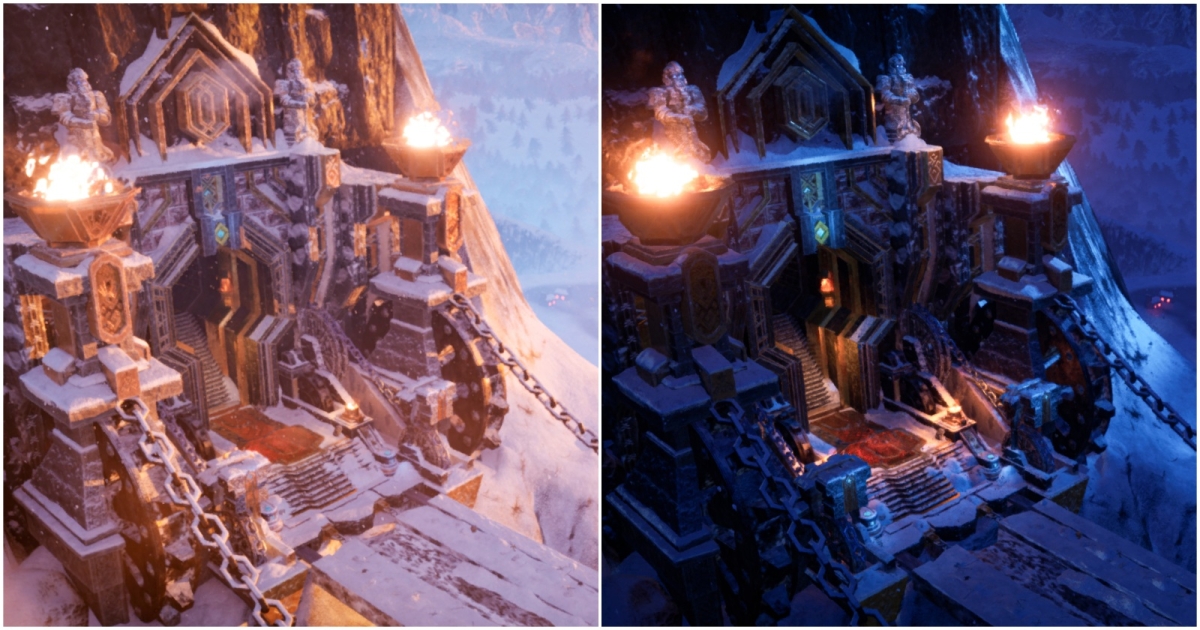
How To Build Large-Scale Game Environment In Unreal Engine 5
How did your country report this? Share your view in the comments.
Diverging Reports Breakdown
How To Build Large-Scale Game Environment In Unreal Engine 5
Sena Sarwari is a 3D environment artist. His latest work is a short narrative film called Final Touches. He shares his thoughts on the process and the challenges he faced to create it. He also shares his advice for beginning artists. He is grateful to everyone who supported him throughout the process. He hopes this article gives a closer look into his workflow, creative decisions, and challenges he overcame throughout this project. It was a long journey, but one that helped me grow both as an artist and a storyteller. I’m looking forward to what comes next and to continuing to grow through even more inspiring work. Thank you for taking the time to read through it.
Final Touches in Premiere Pro
In Premiere Pro, I added atmospheric sound effects to support the visuals. Wind sounds were layered in to reflect the altitude and snowfall surrounding the mountaintop vault.
Inside the vault, I added gear-grinding audio to suggest that the mechanisms are still active, reinforcing the idea that the structure is alive and has been recently disturbed. This full process, from storyboarding and camera work to in-engine lighting and post-production, helped turn the scene into a short narrative experience rather than just a technical showcase.
Conclusion
This piece took many long days and nights, adding up to 6 months of focused, dedicated work. It challenged me creatively, technically, and personally in ways I hadn’t experienced before.
One of the biggest challenges was working with Nanite for the first time. Learning how it handled geometry and understanding UV workflows early on was critical. If I had waited too long to figure that out, I would have ended up redoing UVs on multiple assets. Another major challenge was developing my sculpting skills. I had very little experience with ZBrush before this, so I had to spend time learning and applying new techniques quickly across the entire environment.
As for what I learned, it is hard to put into a single answer. I gained a better understanding of what my quality of work should be and how to stay focused on a clear direction. I also learned the value of building a project that feels cohesive rather than disconnected. Much of that growth came from the support of my classmates at Think Tank Training Centre and especially my mentor, Aleksandar Danilovac, who helped me understand Nanite and guided me in developing a stronger artistic and technical mindset. He pushed me to think of the scene not as a collection of props but as a space that feels alive and purposeful.
Advice to Beginning Artists
Start with a story. Whether you are building an object, a prop, or an entire world, give it context. A simple asset becomes much more meaningful when there is a narrative behind it. That story can guide your design decisions and help you visualize what the piece could become.
Be open to learning new techniques, new workflows, and feedback from others. Growth comes from curiosity and exploration. Most importantly, find your own vision and allow that to shape your path forward as an artist.
I hope this article gives a closer look into my workflow, creative decisions, and the challenges I overcame throughout this project. It was a long journey, but one that helped me grow both as an artist and a storyteller. Thank you for taking the time to read through it.
I’m especially grateful to everyone who supported me throughout the process. Your guidance and encouragement made a real difference. I’m looking forward to what comes next and to continuing to grow through even more inspiring work.
Sena Sarwari, 3D Environment Artist
Source: https://80.lv/articles/building-lord-of-the-rings-inspired-dwarven-mountain-stronghold-in-3d
